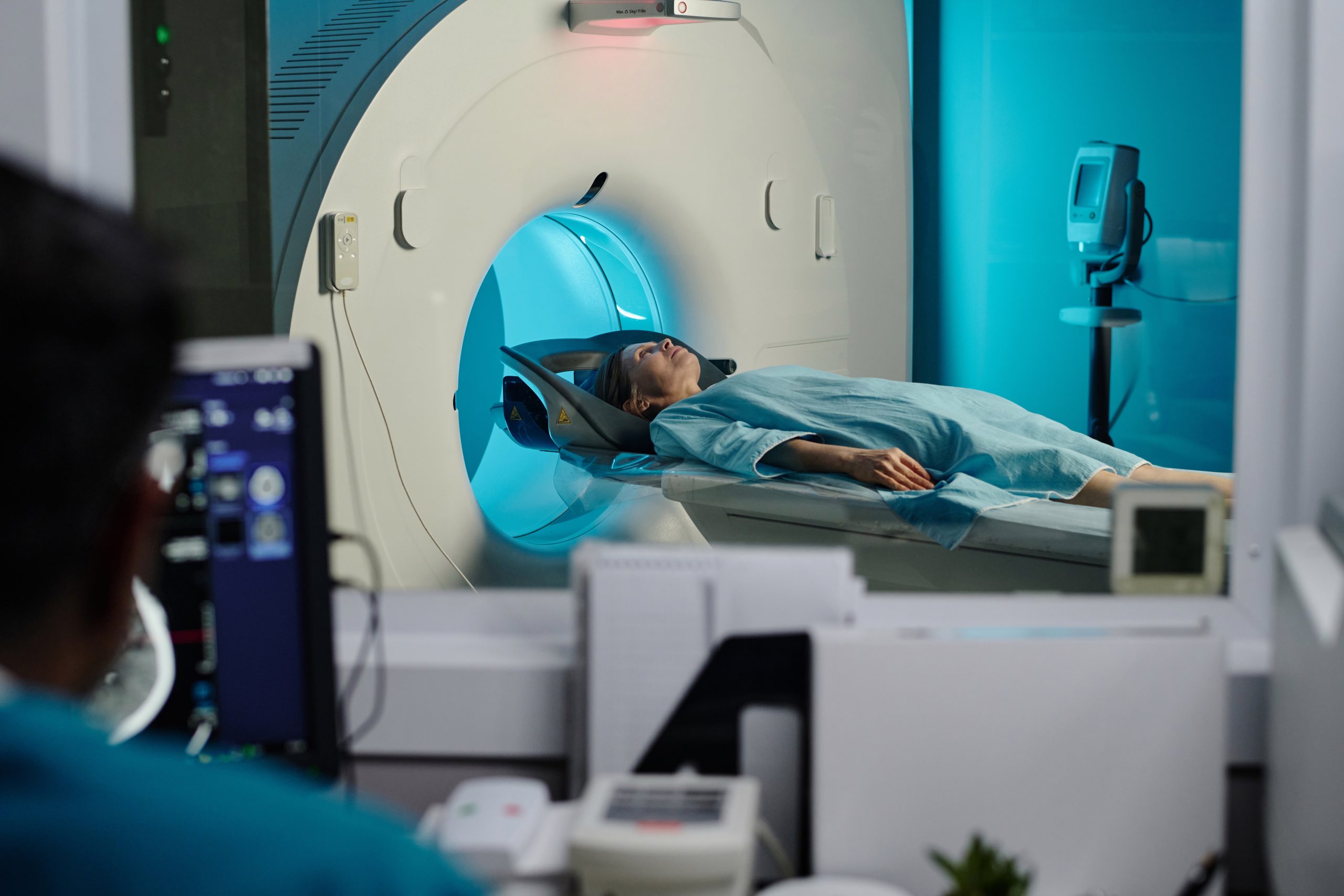Last Updated on November 27, 2025 by Bilal Hasdemir

At Liv Hospital, we focus on top-notch healthcare that puts patients first. Our bone disease treatment uses the latest methods to help patients get better.
We use a team effort, mixing new treatments like SBRT, thermal ablation, and kyphoplasty. This mix helps control the disease, ease pain, and support the bones. It’s a detailed plan to meet our patients’ complex needs.
We stay up-to-date with the latest care methods and global standards. Our team works hard to offer caring and tailored support during treatment.
Key Takeaways
- Multidisciplinary approach for complete care
- Cutting-edge therapies for effective local control
- Innovative treatments for pain relief and structural support
- Personalized support throughout the treatment process
- Adherence to international standards and latest protocols
Understanding Metastatic Bone Disease and Its Impact
Cancer spreading to bones can cause pain, fractures, and reduced mobility. This condition, known as metastatic bone disease, greatly affects a patient’s quality of life and prognosis. We will look into how cancer reaches bones, which cancers are most likely to do so, and the impact on patient outcomes.
How Cancer Spreads to Bones
Cancer cells can travel to bones through the bloodstream or lymphatic system. The spine, pelvis, ribs, and long bones are often affected. Once there, cancer cells can damage or alter bone tissue, leading to various complications.
Common Primary Cancers That Metastasize to Bone
Some cancers are more likely to spread to bones. These include breast, prostate, lung, kidney, and thyroid cancers. Their ability to do so is influenced by their biology and molecular markers.
| Cancer Type | Frequency of Bone Metastasis | Common Sites |
|---|---|---|
| Breast Cancer | High | Spine, Ribs, Pelvis |
| Prostate Cancer | High | Pelvis, Spine, Femur |
| Lung Cancer | Moderate to High | Spine, Ribs, Humerus |
Effects on Patient Quality of Life and Mobility
Metastatic bone disease can severely impact a patient’s quality of life and mobility. It can cause pain, fractures, and hypercalcemia. These issues affect not just physical function but also mental well-being, requiring a holistic management approach.
Getting a bone metastases cure is hard, so treatment focuses on symptom control and preventing complications. For diffuse osseous metastatic disease, where cancer spreads to many bones, managing the condition is even more complex. A team of specialists is needed to improve patient outcomes.
The Complete Metastatic Bone Disease Treatment Approach
Metastatic bone disease treatment has grown to include a full approach. This helps improve care and results for patients. It’s key for meeting the complex needs of those with metastatic bone disease.
Importance of Early Recognition and Intervention
Spotting and treating metastatic bone disease early is vital. Early diagnosis means starting the right treatment sooner. This can lower the chance of serious issues like fractures and severe pain.
Quick action boosts the life quality of these patients. Treating bone metastases early stops or slows down bone problems. This keeps patients moving and cuts down on the need for harsh treatments later.
Multidisciplinary Team Coordination
A team effort is key for managing metastatic bone disease well. This team includes doctors, surgeons, radiologists, pain experts, and more.
- Oncologists give treatments like chemotherapy and hormone therapy.
- Orthopedic surgeons do surgeries to keep bones stable and prevent fractures.
- Radiologists use radiation therapy to ease pain and shrink tumors.
This team works together to create a coordinated treatment plan. They make sure each patient gets the care they need.
Setting Realistic Treatment Goals
It’s important to set achievable goals in treating metastatic bone disease. These goals should match the patient’s health, wishes, and hopes.
Goals might include managing pain, keeping mobility, avoiding bone problems, and bettering life quality. Clear goals help focus treatments on what’s most important. This improves care for patients.
Option 1: Systemic Therapies for Widespread Control
Systemic therapies are key in fighting metastatic bone cancer. They target cancer cells all over the body. This is vital when the disease has spread a lot, needing a broad treatment strategy.
Chemotherapy Protocols for Different Cancer Types
Chemotherapy is a mainstay in treating cancers that spread to bone. Each cancer type needs its own chemotherapy plan. For example, breast and prostate cancers get special regimens based on their type and the patient’s health.
We pick chemotherapy plans that work well but cause fewer side effects. The right chemotherapy depends on the cancer’s type, past treatments, and the patient’s health.
| Cancer Type | Common Chemotherapy Agents | Considerations |
|---|---|---|
| Breast Cancer | Doxorubicin, Paclitaxel | Often used in combination with targeted therapy |
| Prostate Cancer | Docetaxel, Cabazitaxel | May be used with hormone therapy |
| Lung Cancer | Cisplatin, Etoposide | Often used in combination with radiation therapy |
Hormone Therapy for Hormone-Responsive Cancers
Hormone therapy is vital for hormone-sensitive cancers like some breast and prostate cancers. It lowers hormone levels or blocks their effect on cancer cells. This can slow or stop cancer growth.
In cases of hormone-sensitive metastatic bone disease, hormone therapy is very effective. We include it in a full treatment plan, mainly for cancers influenced by hormones.
Targeted Therapies and Immunotherapies
Targeted therapies and immunotherapies are new options for treating metastatic bone disease. Targeted therapies aim at specific cancer cell traits, sparing normal cells. Immunotherapies boost the body’s fight against cancer cells.
We keep improving our use of these therapies, making them fit each patient’s needs. They show great promise, mainly for those with certain genetic markers or tumor traits.
By combining systemic therapies in a full treatment plan, we can manage metastatic bone disease well. This improves patient outcomes and quality of life.
Option 2: Bone-Strengthening Medications
For patients with diffuse osseous metastatic disease, bone-strengthening medications are a key treatment option. These medications play a critical role in preventing skeletal-related events (SREs) such as fractures and spinal cord compression. These events can greatly impact patient quality of life.
Bisphosphonates: Mechanism and Clinical Benefits
Bisphosphonates are drugs that help strengthen bones by reducing bone resorption. They bind to hydroxyapatite in bone, stopping osteoclasts from destroying bone. This is vital in metastatic bone disease, where cancer cells can cause too much bone destruction.
Clinical Benefits:
- Reduce the risk of skeletal-related events
- Decrease bone pain
- Improve quality of life for patients with bone metastases
Zoledronic acid and pamidronate are common bisphosphonates. They have been shown to be effective in managing bone metastases in various cancers.
Denosumab and RANK Ligand Inhibition
Denosumab is a monoclonal antibody that targets the RANK ligand. This protein is involved in osteoclast formation and survival. By inhibiting RANK ligand, denosumab reduces bone resorption and increases bone density.
Key advantages of denosumab include:
- Convenient subcutaneous administration
- Potential for improved renal safety compared to bisphosphonates
- Effective in reducing skeletal-related events across various cancer types
Preventing and Delaying Skeletal-Related Events
Bisphosphonates and denosumab are effective in preventing and delaying SREs in metastatic bone disease. By reducing these events, we can improve patient outcomes and quality of life.
“The use of bone-strengthening medications has become a cornerstone in the management of metastatic bone disease, providing patients with significant protection against skeletal-related events.”
When choosing between bisphosphonates and denosumab, we consider patient renal function, side effects, and cancer characteristics. Our goal is to provide personalized care that meets each patient’s unique needs.
Option 3: Radiation Therapy Techniques
Radiation therapy is key in managing pain and preventing issues with metastatic bone disease. We use different radiation therapy methods to control pain and symptoms. This improves our patients’ quality of life.
Conventional External Beam Radiation
Conventional external beam radiation is a common treatment for metastatic bone disease. It sends high-energy beams from outside the body to the affected bone. This targets the tumor while protecting healthy tissues. It’s effective in reducing pain and preventing bone damage.
This method is often used for localized bone metastases.
Stereotactic Body Radiotherapy (SBRT)
Stereotactic Body Radiotherapy (SBRT) delivers precise, high-dose radiation to specific areas. It’s great for treating complex or hard-to-reach areas. SBRT can achieve local control rates of up to 90%.
This technique is good for patients with limited metastatic sites or those needing aggressive treatment.
Radiopharmaceuticals for Widespread Metastases
For patients with widespread bone metastases, radiopharmaceuticals are a systemic treatment. These radioactive compounds target bone metastases throughout the body. By delivering radiation directly to the affected areas, they provide pain relief and improve quality of life.
This treatment is useful for patients with multiple bone metastases.
| Radiation Therapy Technique | Indication | Benefits |
|---|---|---|
| Conventional External Beam Radiation | Localized bone metastases | Pain relief, prevention of further bone damage |
| Stereotactic Body Radiotherapy (SBRT) | Complex or limited metastatic sites | High local control rates, precise targeting |
| Radiopharmaceuticals | Widespread bone metastases | Systemic pain relief, improved quality of life |
We offer a variety of radiation therapy techniques to meet each patient’s needs. This ensures the best management of metastatic bone disease.
Option 4: Surgical Interventions for Structural Integrity
Surgery is key in managing bone disease caused by cancer. It helps keep bones strong and improves patient health. A team effort is needed to treat this complex condition.
Indications for Surgical Management
Surgery is for patients with bone disease at risk of or with fractures. Choosing surgery depends on the patient’s health, bone disease extent, and surgery benefits. A study in Springer Link shows surgery can greatly help some patients.
Preventive Stabilization for Impending Fractures
Preventive stabilization is vital to stop fractures in weak bones. It keeps bones stable, avoiding pain and mobility loss. Methods include rods, plates, or nails for support.
Reconstruction Techniques After Tumor Resection
After removing tumors, bones need to be fixed. Reconstruction uses bone grafts, prosthetics, or materials. The aim is stable bones for quick recovery and rehab.
Recovery and Rehabilitation Considerations
Recovery and rehab are vital after surgery. A good rehab program helps patients regain strength and function. It includes physical therapy, pain control, and support tailored to each patient.
Option 5: Interventional Procedures for Diffuse Osseous Metastatic Disease
Interventional procedures are key in managing diffuse osseous metastatic disease. They offer relief and support. These techniques provide new options for managing pain and maintaining structural integrity.
Thermal Ablation Techniques
Thermal ablation, like radiofrequency ablation (RFA) and cryoablation, is effective for pain management in bone metastases. It uses extreme temperatures to kill tumor cells. This reduces pain and improves life quality.
We use thermal ablation for patients with limited tumor burden. They have not responded to other treatments or have reasons they can’t use other therapies. Our goal is to quickly relieve pain and possibly reduce the need for pain meds.
Embolization for Vascular Tumors
Embolization is a minimally invasive method to block blood flow to vascular tumors. This reduces their size and alleviates symptoms. It’s great for tumors rich in blood vessels causing pain or neurological issues.
Embolization cuts off the blood supply, shrinking tumors, reducing pain, and improving outcomes. We choose patients for embolization based on tumor characteristics and overall health.
Vertebral Augmentation Procedures
Vertebral augmentation, including vertebroplasty and kyphoplasty, stabilizes vertebral compression fractures from metastatic disease. It involves injecting bone cement into the fractured vertebra for support and pain relief.
Kyphoplasty, in particular, restores vertebral height and reduces kyphotic deformity. This improves spinal alignment and mobility. We consider vertebral augmentation for patients with painful vertebral fractures not helped by conservative management.
| Procedure | Benefits | Indications |
|---|---|---|
| Thermal Ablation | Pain relief, tumor destruction | Limited tumor burden, failed conventional treatments |
| Embolization | Tumor shrinkage, pain reduction | Vascular tumors causing pain or neurological compromise |
| Vertebral Augmentation | Structural support, pain alleviation | Painful vertebral compression fractures |
Option 6: Comprehensive Pain Management Strategies
Comprehensive pain management is key for patients with metastatic bone disease. It greatly improves their quality of life.
Pharmacological Approaches to Pain Control
Pharmacological methods are essential in managing pain from metastatic bone disease. We use various medications to control pain effectively.
For mild to moderate pain, we often use NSAIDs. Opioids are for more severe pain. Adjuvant therapies like corticosteroids and anticonvulsants help manage specific pain types.
| Medication Class | Examples | Use in Metastatic Bone Disease |
|---|---|---|
| NSAIDs | Ibuprofen, Naproxen | Mild to moderate pain |
| Opioids | Morphine, Fentanyl | Moderate to severe pain |
| Adjuvant Therapies | Corticosteroids, Gabapentin | Enhance pain relief, manage specific pain types |
Interventional Pain Procedures
For those who don’t get enough pain relief from medication, interventional pain procedures are an option. These procedures can greatly reduce pain and improve life quality.
Common procedures include nerve blocks, spinal cord stimulation, and intrathecal drug delivery. Each is tailored to the patient’s specific needs and pain.
Integrative Approaches for Symptom Management
Integrative methods are also important in managing symptoms and improving well-being. This includes physical therapy, psychological support, and complementary therapies like acupuncture and mindfulness-based stress reduction.
By adding these integrative approaches to a pain management plan, we can meet the complex needs of patients with metastatic bone disease. This improves their overall quality of life.
Option 7: Emerging and Innovative Treatments
New treatments are being developed to fight metastatic bone disease. These new therapies aim to improve patient outcomes and quality of life.
Novel Targeted Therapies in Development
New targeted therapies are being studied to tackle bone metastases. They aim to target cancer cells and the bone environment, protecting healthy tissues. Targeted therapies have shown promise in early studies and are now in clinical trials.
Research focuses on the RANK/RANKL pathway, key in bone breakdown. Denosumab, a RANKL inhibitor, has shown to prevent bone problems in patients. More research is looking into other targets in this pathway.
Immunotherapy Advances for Bone Metastases
Immunotherapy is making big strides in treating bone metastases. Immunotherapies boost the body’s fight against cancer. Researchers are exploring different ways to enhance this immune response.
Clinical trials are underway to test immunotherapies in bone metastases patients. Early results suggest these treatments could offer significant benefits, even when combined with other treatments.
Accessing Clinical Trials and Experimental Therapies
For those with advanced bone metastases, clinical trials can offer new treatments. These trials are key in testing new therapies and finding the best treatments.
Patients and doctors can find clinical trials through online databases and cancer research groups. It’s important to talk about the benefits and risks of trial participation with a healthcare professional.
As research moves forward, treatments for metastatic bone disease will likely change a lot. New treatments bring hope for better patient outcomes and quality of life. We’re committed to keeping up with these advancements to give our patients the best care.
Individualized Treatment Planning for Optimal Outcomes
To get the best results, treatment for metastatic bone disease needs a careful plan. At Liv Hospital, we know each patient is different. So, we create a care plan that fits them perfectly.
Primary Cancer Type and Biology
The type and biology of the primary cancer are key in choosing the right treatment. Different cancers spread to bone in different ways. For example, breast, prostate, and lung cancers often spread to bone. We tailor treatments based on these specific cancers.
Understanding the primary cancer’s biology helps us pick the best treatments. This way, we treat the bone metastases and the cancer itself.
Extent and Location of Bone Involvement
The spread and location of bone metastases are important for treatment. Patients with widespread disease might need systemic treatments. Those with localized disease might do better with localized treatments like radiation or surgery.
We use advanced imaging to see how far and where the bone metastases are. This helps us create a treatment plan that meets the patient’s needs. Whether it’s preventing fractures, managing pain, or improving quality of life, we focus on what’s best for them.
Patient Performance Status and Preferences
A patient’s health, performance status, and preferences are key in treatment planning. We listen to our patients to understand their goals and concerns. This ensures the treatment plan is effective and fits their values and lifestyle.
“The patient’s voice is central to our care approach,” , a leading oncologist at Liv Hospital. “By understanding their priorities and concerns, we can develop a treatment plan that is truly personalized.”
Liv Hospital’s Academic Protocol Approach
Liv Hospital is at the forefront of care with its academic protocol approach. We stay updated with the latest research and clinical trials. This ensures our patients get access to new treatments that can improve their outcomes.
Our team works together to create personalized treatment plans. We use the latest advancements in metastatic bone disease treatment. This way, we aim to get the best results for our patients.
As a recent study showed,
“The integration of multidisciplinary care and personalized treatment planning has shown significant improvements in patient outcomes and quality of life.”
At Liv Hospital, we’re committed to this level of care. We make sure every patient gets a treatment plan that’s made just for them.
Conclusion: The Future of Metastatic Bone Disease Management
Recent advances have greatly improved life for those with metastatic bone disease. We’ve looked at seven key treatments, from systemic therapies to new and emerging options. Each one is vital in managing bone metastases.
Bone-strengthening drugs and procedures like kyphoplasty, common on eastern shores, are showing great promise. They help reduce pain and keep bones stable. With ongoing research, finding a cure for bone metastases is becoming more possible.
We’re dedicated to top-notch healthcare and keeping up with medical breakthroughs. By customizing treatments and using the latest tech and research, we’re improving patient lives.
The outlook for managing metastatic bone disease is bright. Ongoing research and new ideas are leading to better treatments.
FAQ
What is metastatic bone disease, and how is it treated?
Metastatic bone disease happens when cancer spreads to the bones. We treat it with a mix of methods. This includes medicines, radiation, surgery, and pain management.
What are the common primary cancers that metastasize to bone?
Cancers like breast, prostate, lung, kidney, and thyroid often spread to the bones. Knowing the type of cancer helps us choose the best treatment.
How do bone-strengthening medications work in treating metastatic bone disease?
Medicines like bisphosphonates and denosumab help by stopping bone loss. This improves life quality and keeps patients mobile.
What is the role of radiation therapy in managing metastatic bone disease?
Radiation therapy helps by easing pain and stopping bone damage. It uses different methods like external beam radiation and SBRT.
When is surgical intervention necessary for metastatic bone disease?
Surgery is needed for big bone damage, fractures, or spinal problems. It helps fix bones, reduce pain, and improve movement.
What are interventional procedures used for in treating diffuse osseous metastatic disease?
Procedures like thermal ablation and embolization help manage pain and support bones. They are used for widespread bone disease.
How is pain managed in patients with metastatic bone disease?
Pain management is a whole-body effort. It includes medicines, procedures, and other methods to help patients feel better.
What emerging treatments are available for metastatic bone disease?
New treatments include targeted therapies and immunotherapy. They offer hope for better patient outcomes.
How is treatment planning individualized for patients with metastatic bone disease?
We plan treatment based on many factors. This includes the cancer type, bone involvement, and patient health. We aim for a treatment that fits each person’s needs.
What is kyphoplasty, and how is it used in managing vertebral fractures due to metastatic bone disease?
Kyphoplasty is a procedure to fix and strengthen broken vertebrae. It’s used for fractures caused by bone disease. It helps with pain and restores height.
- breastcancer.org. (n.d.). Bone Metastasis. Retrieved from https://www.breastcancer.org/types/metastatic/bone-metastasis
- Endovascular Today. (2018, October). Metastatic Osseous Disease: Current Interventional Oncology Treatment Options. Retrieved from https://evtoday.com/articles/2018-oct/metastatic-osseous-disease-current-interventional-oncology-treatment-options
- Musculoskeletal Tumor Society (MSTS). (n.d.). Metastatic Disease. Retrieved from https://www.msts.org/metastatic-disease
- OncoLink. (n.d.). Bone Metastases Treatment. Retrieved from https://oncolink.org/cancers/bone/bone-metastases/bone-metastases-treatment
- Research Article. (n.d.). PMC11993453. Retrieved from https://pmc.ncbi.nlm.nih.gov/articles/PMC11993453/








